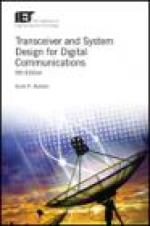Transceiver and System Design for Digital Communications
In this 5th Edition, the author continues to evaluate various novel techniques and design methods for the modulation and transmission of digital data, allowing the readers to gain a firm understanding of the processes needed to effectively design wireless data link communication systems. Since the author regularly runs industry seminars based on this book, he is continuously updating the book material. This edition includes thorough updates of all chapters including all concepts and revised and new figures.

